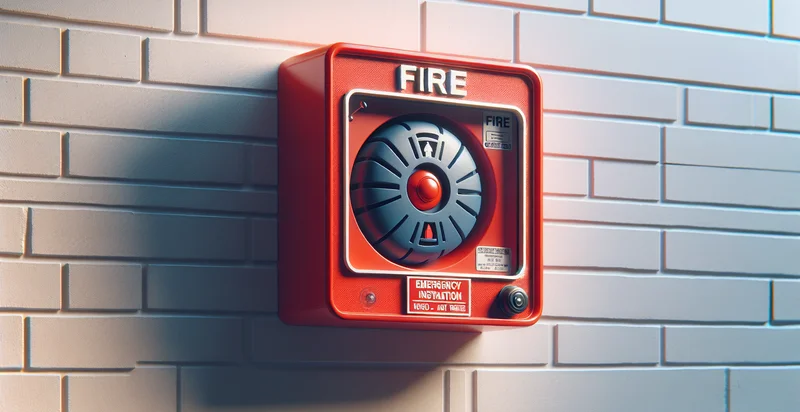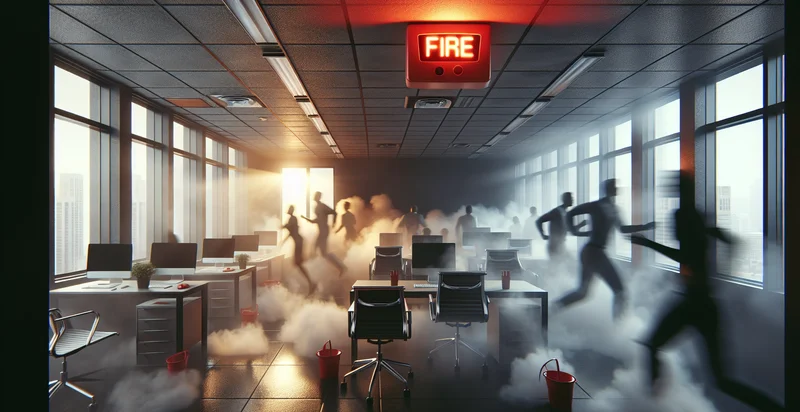Identify if a fire alarm is visible
using AI
Below is a free classifier to identify if a fire alarm is visible. Just upload your image, and our AI will predict if a fire alarm is present - in just seconds.

Contact us for API access
Or, use Nyckel to build highly-accurate custom classifiers in just minutes. No PhD required.
Get started
import nyckel
credentials = nyckel.Credentials("YOUR_CLIENT_ID", "YOUR_CLIENT_SECRET")
nyckel.invoke("if-a-fire-alarm-is-visible-identifier", "your_image_url", credentials)
fetch('https://www.nyckel.com/v1/functions/if-a-fire-alarm-is-visible-identifier/invoke', {
method: 'POST',
headers: {
'Authorization': 'Bearer ' + 'YOUR_BEARER_TOKEN',
'Content-Type': 'application/json',
},
body: JSON.stringify(
{"data": "your_image_url"}
)
})
.then(response => response.json())
.then(data => console.log(data));
curl -X POST \
-H "Content-Type: application/json" \
-H "Authorization: Bearer YOUR_BEARER_TOKEN" \
-d '{"data": "your_image_url"}' \
https://www.nyckel.com/v1/functions/if-a-fire-alarm-is-visible-identifier/invoke
How this classifier works
To start, upload your image. Our AI tool will then predict if a fire alarm is present.
This pretrained image model uses a Nyckel-created dataset and has 2 labels, including Fire Alarm Visible and Fire Alarm Not Visible.
We'll also show a confidence score (the higher the number, the more confident the AI model is around if a fire alarm is present).
Whether you're just curious or building if a fire alarm is visible detection into your application, we hope our classifier proves helpful.
Related Classifiers
Need to identify if a fire alarm is visible at scale?
Get API or Zapier access to this classifier for free. It's perfect for:
- Facility Safety Monitoring: This use case involves automated surveillance systems in commercial buildings to identify the presence of fire alarms. If a fire alarm is detected, the system can automatically trigger alerts to facility managers and emergency services, ensuring a rapid response to potential fire hazards.
- Smart Home Systems: In smart home applications, this function can enhance safety features by detecting fire alarms visible through smart cameras. When a fire alarm is identified, the home system can notify homeowners via mobile alerts and initiate protective measures, such as unlocking doors for emergency responders.
- Insurance Risk Assessment: Insurance companies can utilize this classification function during property assessments to determine the compliance and safety features of a building. If fire alarms are visible in the analyzed images, it can positively influence risk evaluations and premium calculations.
- Fire Safety Compliance Checks: Regulatory agencies can use this technology to conduct virtual inspections of buildings by analyzing submitted images. The system can detect whether fire alarms are installed and operational, helping ensure compliance with fire safety regulations without the need for physical inspections.
- Construction Site Safety: On construction sites, this classification function can be employed to verify the installation of fire alarms as mandated by safety regulations. A real-time monitoring system can flag non-compliance issues, thereby improving overall site safety and reducing the risk of fire incidents.
- Smart City Infrastructure: In smart city initiatives, municipal services can integrate this technology into smart surveillance networks to monitor public and commercial buildings for visible fire alarms. This proactive monitoring can enhance public safety by efficiently directing resources to areas needing immediate fire safety checks.
- Emergency Training Simulations: This classification function can be used in virtual training environments for emergency response teams. By incorporating realistic scenarios with visible fire alarms, trainees can practice identifying and responding to potential emergencies, ultimately improving their preparedness for real-life situations.


